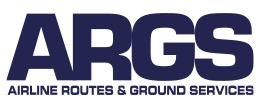The European Union Aviation Safety Agency (EASA) today launched a programme to monitor the implementation of its COVID-19 operational guidelines in real-life situations. The Agency is inviting European airports and airlines with their national authorities to apply the new standards in practice and report back on their experience, with the objective of fine-tuning the guidelines and developing best practices.
The guidelines, developed by EASA and the European Centre for Disease Prevention and Control (ECDC) on the basis of scientific evidence and expert opinion, were published last week. The aim is to allow air travel to restart in safe conditions from both an operational and public health point of view. Member states and industry stakeholders provided extensive input through consultation.
Recognising that airports, airlines and aircraft are different, the recommendations deliberately offer some flexibility in approach and explicitly task all relevant aviation organisations with determining how best to apply them in individual locations and situations, with the aim to maximise harmonisation for the resumption of aviation in Europe.
“The safe restoration of transport connectivity, and notably in aviation, is a crucial component in the economic recovery from the pandemic, which is why the European Commission tasked our two agencies with developing this protocol. Indeed, what is unique in the Operational Guidelines is the fact that they are validated both by aviation authorities as well as by health authorities. Only if they work together resumption of traffic will become possible.” said Henrik Hololei, Director-General for Mobility and Transport. “This monitoring programme is an important next step in rebuilding passenger confidence and returning commercial aircraft to the skies.”
In practical terms, the programme will focus on flights operated by airlines which are ready to apply the guidelines between airports which equally apply them. This will create an end-to-end passenger journey that respects the guidelines from the moment of arriving in the departure airport to the time of exit from the destination terminal. Learnings from the monitoring programme can be applied by other airports and airlines so as to ensure a high level of effectiveness of the measures across the entire network.
The airlines and airports involved will each sign a project charter pledging that they will abide by the guidelines, coordinate with national authorities and design practical solutions when they encounter practical problems with the implementation of the guidelines. In doing so, the airports and airlines will monitor the overall effectiveness of the guidelines. To this effect, they also agree to report any issues they discover to EASA and ECDC, together with weekly observed data, and any opportunities for improvement.
“The airports and airlines participating in this programme will be pioneers at the forefront of the return to normal operations after this unprecedented crisis for commercial aviation,” said EASA Executive Director Patrick Ky. “The feedback they provide to us will be instrumental in ensuring that we genuinely achieve the health safety aims of these guidelines and will help the entire sector to resume operations in a way that makes passengers and staff feel safe and secure.”
Primary recommendations of the guidelines are to observe physical distancing at all times and wherever possible, to wear a medical face mask throughout the journey to protect others, and to practise scrupulous and frequent hand hygiene throughout the journey. Reassurance is given that filtered air on airplanes is safer and cleaner than many of us breathe on the ground.
Passengers themselves are expected to take personal responsibility. For example, passengers who have COVID-19 compatible symptoms (fever, cough, sudden loss of smell, shortness of breath) or who are aware that they have come in contact with a COVID-19 case should not arrive at the airport or should postpone their travel to protect their fellow passengers.
For aircraft and airport operators, significant changes will be required to their processes to ensure that physical distancing is encouraged wherever possible, for example through floor markings. Signs and other communication should serve as a constant reminder of the new rules.
The guidelines take account of the specific conditions on an aircraft such as absence of face-to-face seating and the enhanced ventilation and air filtration characteristics and offer some flexibility due to the operational constraints and limited space. But they are clear that, wherever possible, passengers should be physically distanced, except in cases where they are travelling together.
In addition to any adjustments as a result of the monitoring programme, the recommended measures will be regularly evaluated and updated in line with changes in knowledge of the risk of transmission as well as with development of other diagnostic or preventive measures (including technological) and the evolution of the pandemic.



